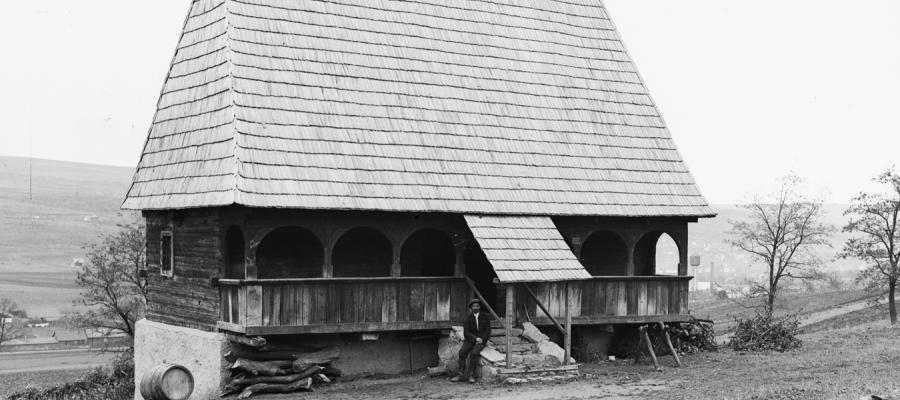History
The National Ethnographic Park “Romulus Vuia” in Cluj-Napoca, the first open-air museum in Romania, was founded on the 1st of June 1929, as a section of the Ardeal Museum of Ethnography, through the decision of the Cults and Arts Ministry. The National Park was officially acknowledged through the Law concerning the organisation of the Transylvanian Museum of Ethnography and of the National Park in Cluj, published in the Official Gazette on 5th of April, 1932. The founder of the park, the ethnologist Romulus Vuia, chose a form of organisation in which some rural original farmsteads were going to be inhabited by peasants involved in traditional economic activities. The initial surface of the park was of 75 hectares.
Between 1929 and 1940 there were transferred in the Ethnographical Park the following buildings: a House from Vidra (1929), a Sheepfold from Poiana Sibiului together with the shepard and 75 sheep (1930), a Road Cross from Lupsa (1931), a Farmstead from Telciu (1932) – donation of the inhabitants of Telciu commune and a Hungarian Shed from Stana (1936). In addition, the museum restaurant was opened, Gaudeamus, which offered to the visitors of the Ethnographical Park traditional products of Transylvania.
During the Second World War, most of the buildings in the Ethnographical Park were destroyed. At the return to Cluj, in 1945, from the units transferred in the National Park only the House of a wooden vessel maker from Vidra, Avram Iancu commune, and the museum restaurant, Gaudeamus, were preserved.
In 1956, Teodor Onisor and Valer Butura restructured the thematic plan of the park and established the scientific criteria followed in order to transfer the next constructions in the Ethnographical Park, and also the ethnographical zoning of Transylvania. There were outlined four thematic sectors: a sector with regional types of farmsteads and with monuments of architecture, another one with installations and peasant workshops, an ethno-botanic sector with traditional crops and related buildings of the village border and an ethno-zoological sector with pastoral buildings and animals of local breed.
This innovative vision adopted lately by most of the European profile museums was abandoned because of an unfavourable situation, so that only the tehnical sector and the one of the zonal farmsteads were organised on 16 hectars having the structure of a traditional dispersed village.
The first sector contains peasant technical installations and workshops dated in between 18th and 20th centuries. They illustrate the traditional techniques of wood and iron processing, of gold getting, of wool fabrics processing, of clay and stone processing, of cereals crushing and of oil getting.
The second sector contains traditional peasant farmsteads representative for distinctive ethnographical areas in Transylvania, including constructions dated between 17th and 20th centuries, having the whole necessary household inventory.
Selected rigorously and with scientific purposefulness and uprightness, as a result of long research campaigns, by three generations of ethnographers, stimulated by the professional devotment of some important personalities such as Valeriu Butură, the exhibited buildings – most of them being dated by inscriptions – are among the oldest and most valuable monuments of architecture in the Romania’s ethnographical heritage.














